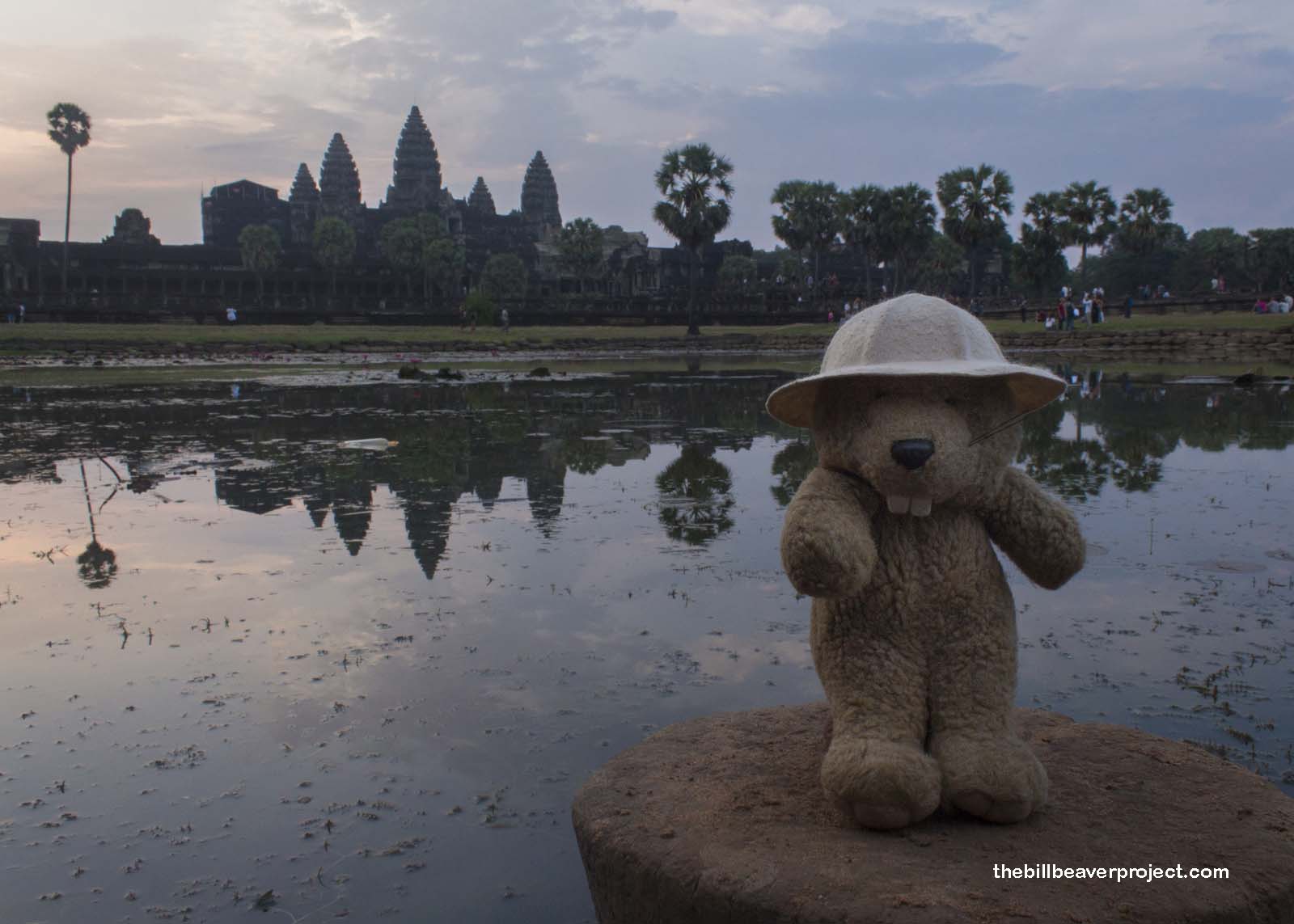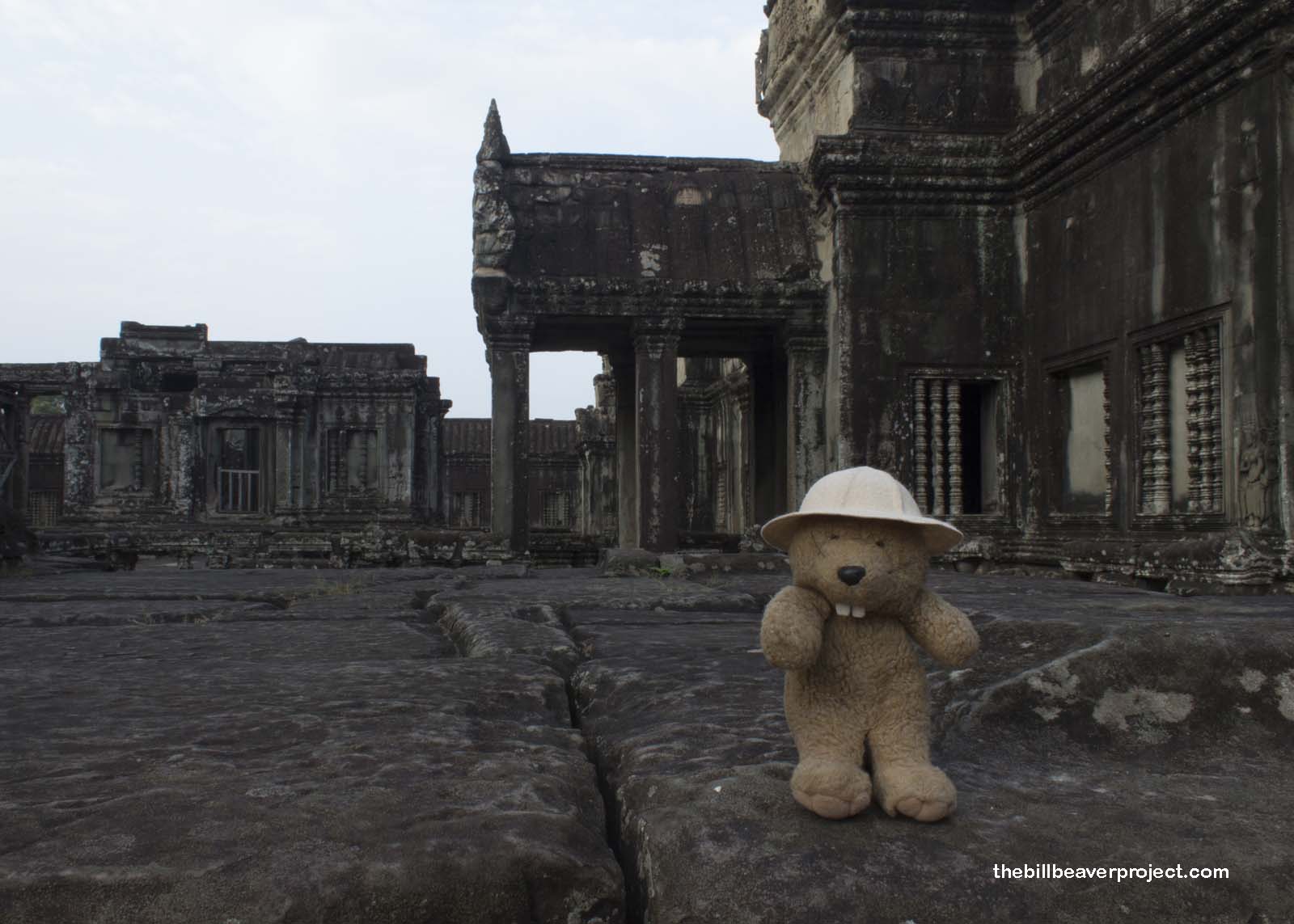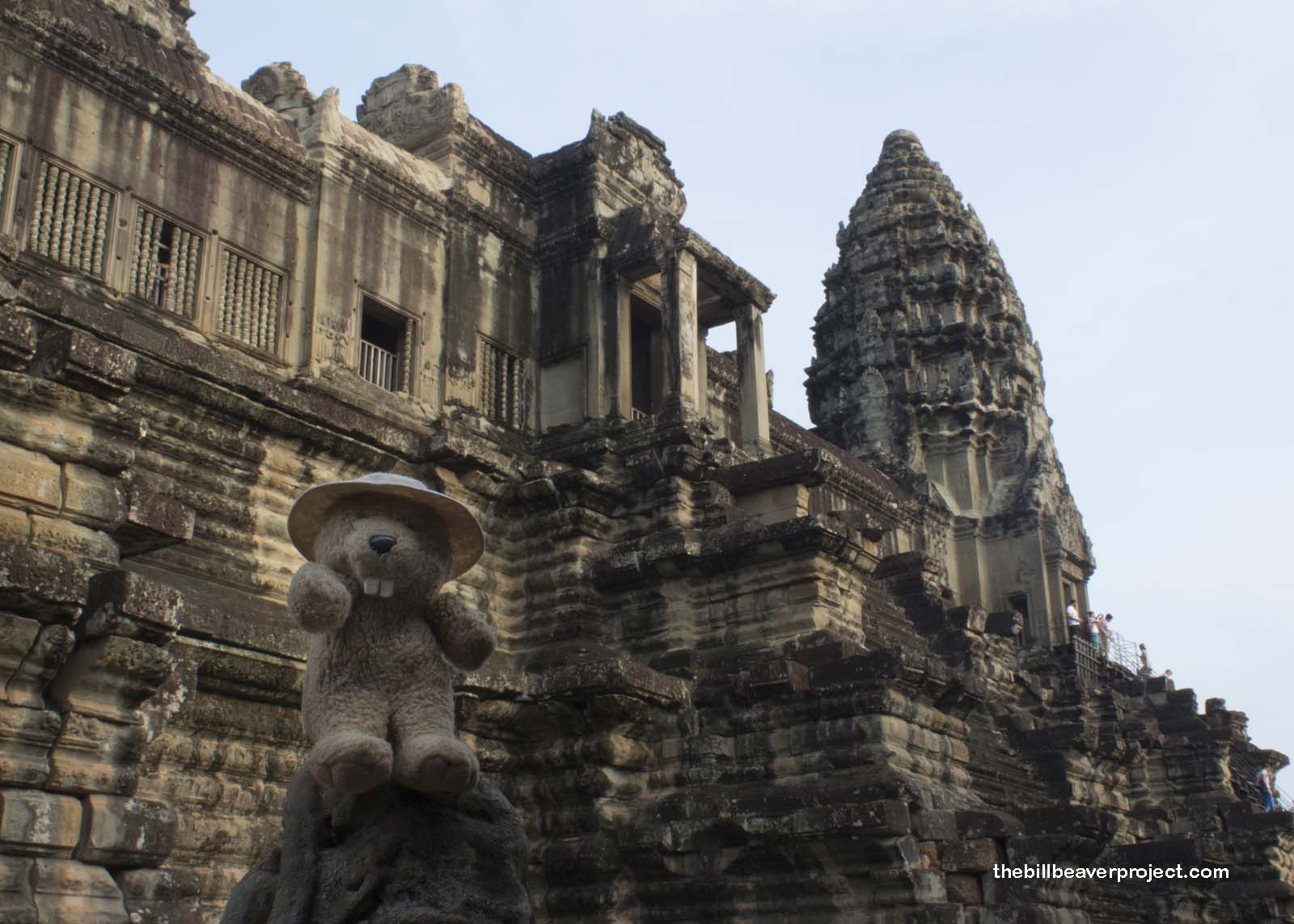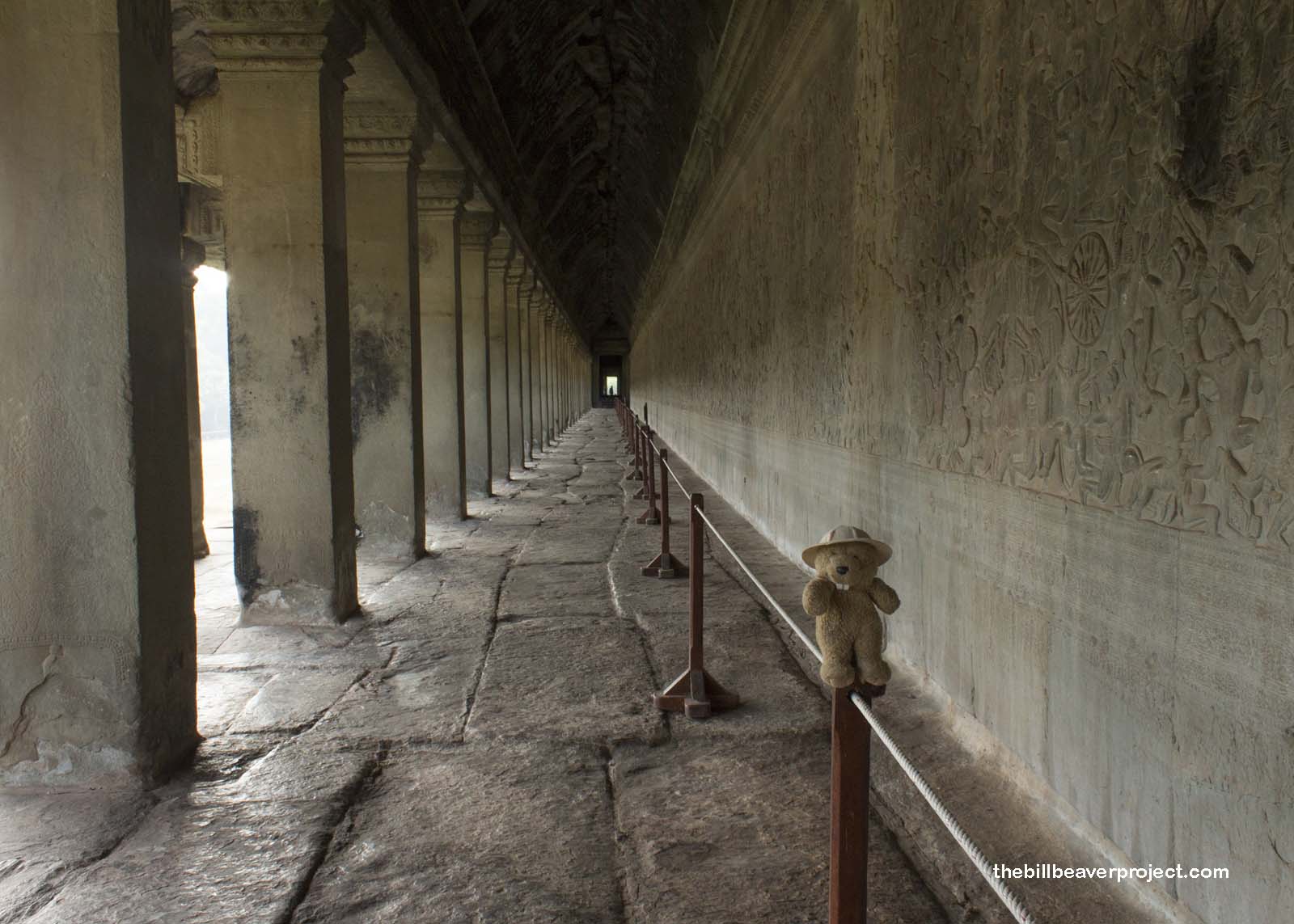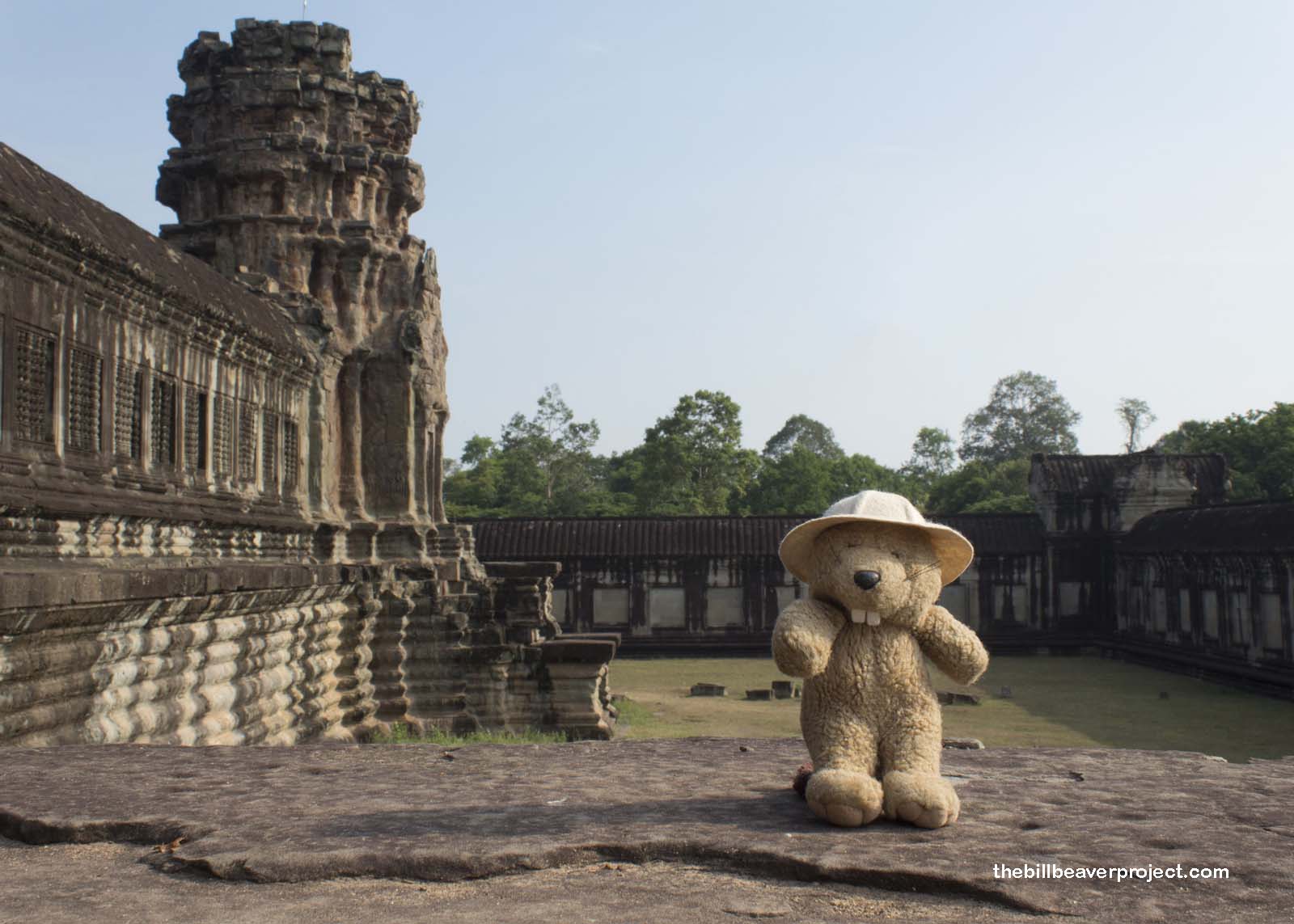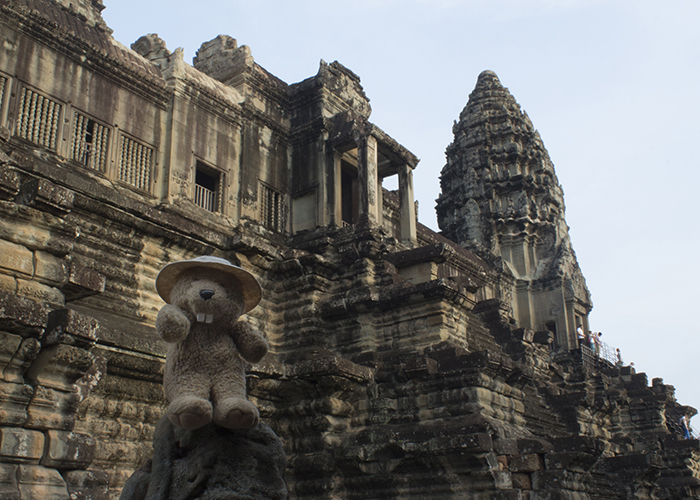| What makes it historical? |
King Suryavarman II had this temple built in the 12th Century AD, both as a tribute to the supreme god, Vishnu, and to serve as his final resting place! He had it built to resemble the holy, five-peaked mountain of Meru from the ground level, and a combined Yoni-Lingam, symbolic of the girl bits of Shakti and the boy bits of Shiva!
Like Chichén Itzá in Mexico, this temple is aligned perfectly to catch the rising sun at the equinox. It also incorporates snake imagery, particularly the seven-headed Naga that bridges Angkor Wat’s moat and symbolizes the rainbow bridge (7 rainbow chakras) between life and death. Thirdly, while the Castillo of Chichén Itzá is built with nine levels to symbolize the nine planets and nine months to create a baby, Angkor Wat also has nine towers with nine tiers!
Unlike most of the other temples in the Angkor complex, Angor Wat was never fully abandoned, even after the Khmer Empire fell in 1431. Many Buddhist monks used it as a temple for over 400 years until French explorer, Henri Mouhot, saw it for the first time and wrote home about it. His writings encouraged France to colonize Cambodia, where they ruled for 90 years. Though the French could not believe that this amazing complex could have been built by the Khmer people, for everyone living in Cambodia today, Angkor Wat is very much a source of national pride! |
